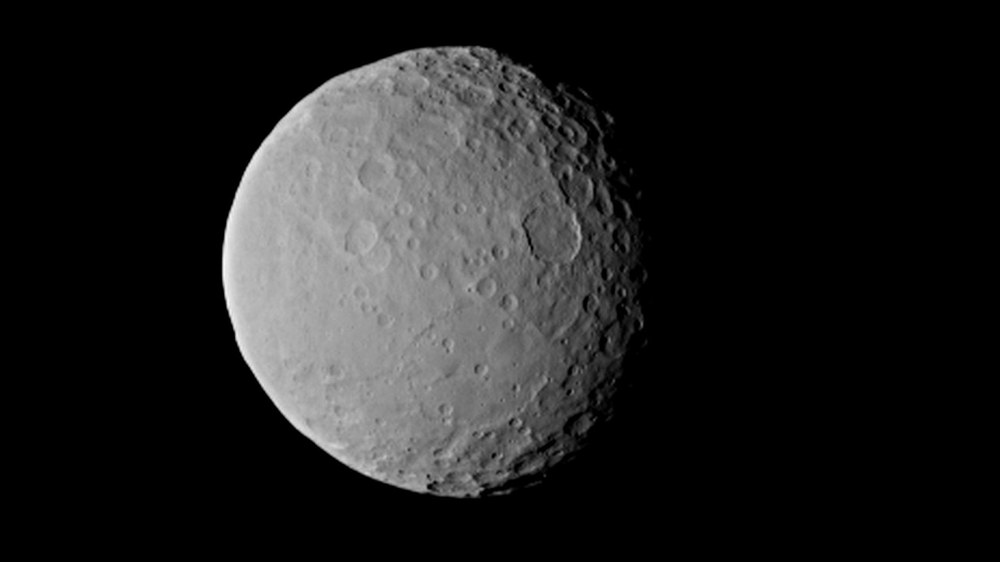Promising crater-strewn landscape on dwarf planet Ceres


Only 46,000 kilometres separated the Dawn spacecraft from its destination, the dwarf planet Ceres, when its German-built Framing Camera acquired the latest images on 19 February 2015. One of the most striking features of Ceres is the multitude of different crater shapes across its surface; in addition to numerous smaller, shallow craters, the images also reveal impact basins with large mountains located at their centres. The diameter of Ceres, the largest celestial body found in the asteroid belt between Mars and Jupiter, is approximately 1000 kilometres, so the largest craters on its surface could have a diameter of roughly 300 kilometres. The orbiter is currently completing the final stage of its journey; it is scheduled to reach Ceres on 6 March 2015, making it the first spacecraft to investigate a dwarf planet from close range. The German Aerospace Center (Deutsches Zentrum für Luft- und Raumfahrt; DLR) will begin mapping Ceres in May 2015.
One mission, two celestial bodies
Once Dawn has entered orbit around Ceres, this will be the second celestial body that the mission has investigated; launched in 2007, the orbiter circled the asteroid Vesta in 2011, where scientists also discovered varied landscape types with craters, mountains, canyons and gorges. "Even just on approaching Ceres, we can already see a great diversity of landscapes on its surface," says Ralf Jaumann from the DLR Institute of Planetary Research. "The structures indicate that large-scale processes have changed the surface of Ceres over time." Besides craters, the images also show brighter regions that unfortunately cannot yet be interpreted from a distance of 46,000 kilometres. The image resolution at the asteroid surface is currently four kilometres per pixel.
Ceres is particularly exciting for the researchers, as they suspect that an ocean may be located beneath its crust. Unlike Vesta – a 'dry' asteroid – the second destination of the Dawn mission is a 'wet' asteroid situated further from the Sun and likely to have a water content of between 15 and 25 percent. “We are investigating two very different types of asteroid on this mission,” explains Jaumann. These two celestial bodies are unlikely to have experienced substantial changes since their formation over 4.5 billion years ago, and the scientists are hopeful that they will reveal information about the origin of the Solar System.
The mission
NASA's Jet Propulsion Laboratory (JPL) in Pasadena manages the Dawn mission; JPL is a division of the California Institute of Technology. The University of California, Los Angeles, is responsible for the overall Dawn mission science. The camera system on the spacecraft was developed and built under the leadership of the Max Planck Institute for Solar System Research in Göttingen, Germany, in collaboration with the DLR Institute of Planetary Research in Berlin and the Institute of Computer and Communication Network Engineering in Braunschweig. The Framing Camera project is funded by the Max Planck Society, DLR, and NASA/JPL.

